Ocean Acidification Summary for Policymakers 2013
Published by IGBP: This summary for policymakers reports on the state of scientific knowledge on ocean acidification, based on the latest research presented at The Third Symposium on the Ocean in a High-CO2 World, held in Monterey, California, in September 2012. Experts present the projected changes from ocean acidification for ecosystems and the people who rely on them, according to levels of confidence for these outcomes.
Ocean Acidification Summary for Policymakers
Third Symposium on the Ocean in a High-CO2 World
- Download (4.9 MB)
- Infographic (4.9 mb)
- Aragonite infographic (4.7 mb)
Release URL
Download the summary here, as well as the infographics that illustrate the problems that ecosystems and humans face as ocean acidification increases over the next century. The summary addresses outcomes based on whether humans continue to emit carbon dioxide at current rates to the atmosphere, or what could happen if policymakers take action to mitigate these emissions.
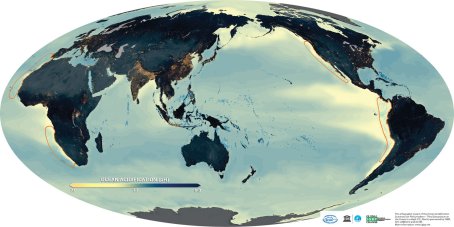
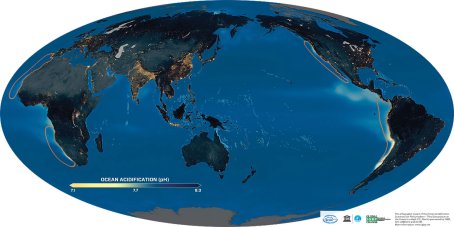
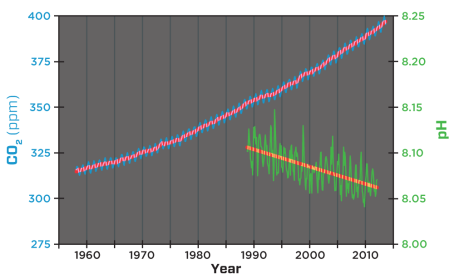
Credit: Adapted from Richard Feely (NOAA), Pieter Tans, NOAA/ESRL (www.esrl.noaa.gov/gmd/ccgg/trends) and Ralph Keeling, Scripps Institution of Oceanography (scrippsco2.ucsd.edu)
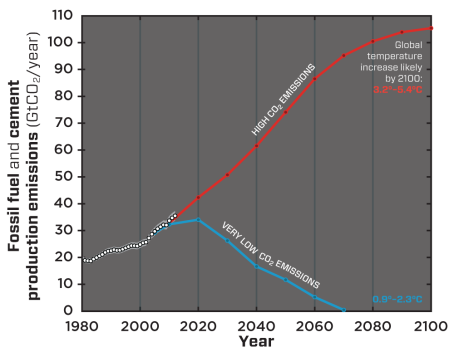
Credit: Glen Peters and Robbie Andrew (CICERO) and the Global Carbon Project, adapted from Peters et al., 2013 (reference 8). Historic data from Carbon Dioxide Information Analysis Center.
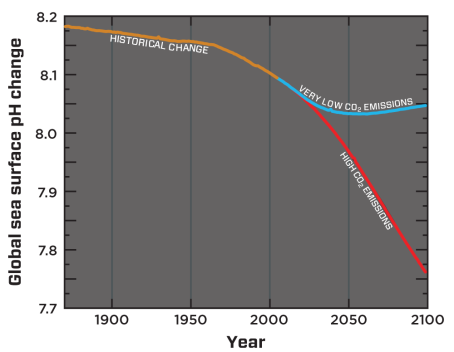
Credit: Adapted from Bopp et al., 2013 (reference 9).
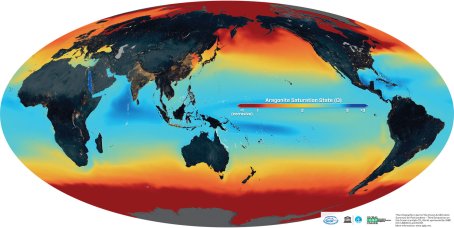
If Ω is less than 1 (Ω<1), conditions are corrosive (undersaturated) for aragonite-based shells and skeletons. Coral growth benefits from Ω≥3.
By 2100, computer model projections show that Ω will be less than 3 in surface waters around tropical reefs if CO2 emissions continue on the current trajectory.
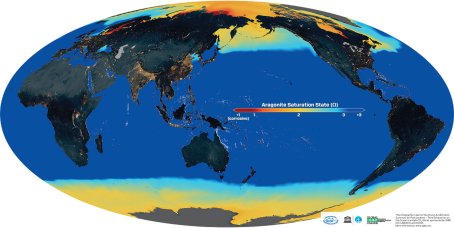
Related
Multiple stressors of ocean ecosystems in the 21st century: projections with CMIP5 models
doi:10.5194/bgd-10-3627-2013 | Release URL
Abstract
Ocean ecosystems are increasingly stressed by human-induced changes of their physical, chemical and biological environment. Among these changes, warming, acidification, deoxygenation and changes in primary productivity by marine phytoplankton can be considered as four of the major stressors of open ocean ecosystems. Due to rising atmospheric CO2 in the coming decades, these changes will be amplified.
Here, we use the most recent simulations performed in the framework of the Coupled Model Intercomparison Project 5 to assess how these stressors may evolve over the course of the 21st century. The 10 Earth System Models used here project similar trends in ocean warming, acidification, deoxygenation and reduced primary productivity for each of the IPCC’s representative concentration parthways (RCP) over the 21st century.
For the “business-as-usual” scenario RCP8.5, the model-mean changes in 2090s (compared to 1990s) for sea surface temperature, sea surface pH, global O2 content and integrated primary productivity amount to +2.73 °C, −0.33 pH unit, −3.45% and −8.6%, respectively. For the high mitigation scenario RCP2.6, corresponding changes are +0.71 °C, −0.07 pH unit, −1.81% and −2.0% respectively, illustrating the effectiveness of extreme mitigation strategies.
Although these stressors operate globally, they display distinct regional patterns. Large decreases in O2 and in pH are simulated in global ocean intermediate and mode waters, whereas large reductions in primary production are simulated in the tropics and in the North Atlantic. Although temperature and pH projections are robust across models, the same does not hold for projections of sub-surface O2 concentrations in the tropics and global and regional changes in net primary productivity.
About the Author: CLIMATE STATE
POPULAR
COMMENTS
- Robert Schreib on Electricity generation prices may increase by as much as 50% if only based on coal and gas
- Robert Schreib on China made a historic commitment to reduce its emissions of greenhouse gases
- Lee Nikki on COP30: Climate Summit 2025 – Intro Climate Action Event
- Hollie Bailey on Leaders doubled down on fossil fuels after promising to reduce climate pollution
- Malcolm R Forster on Mythbusters tests global warming theory – does CO2 warm air?